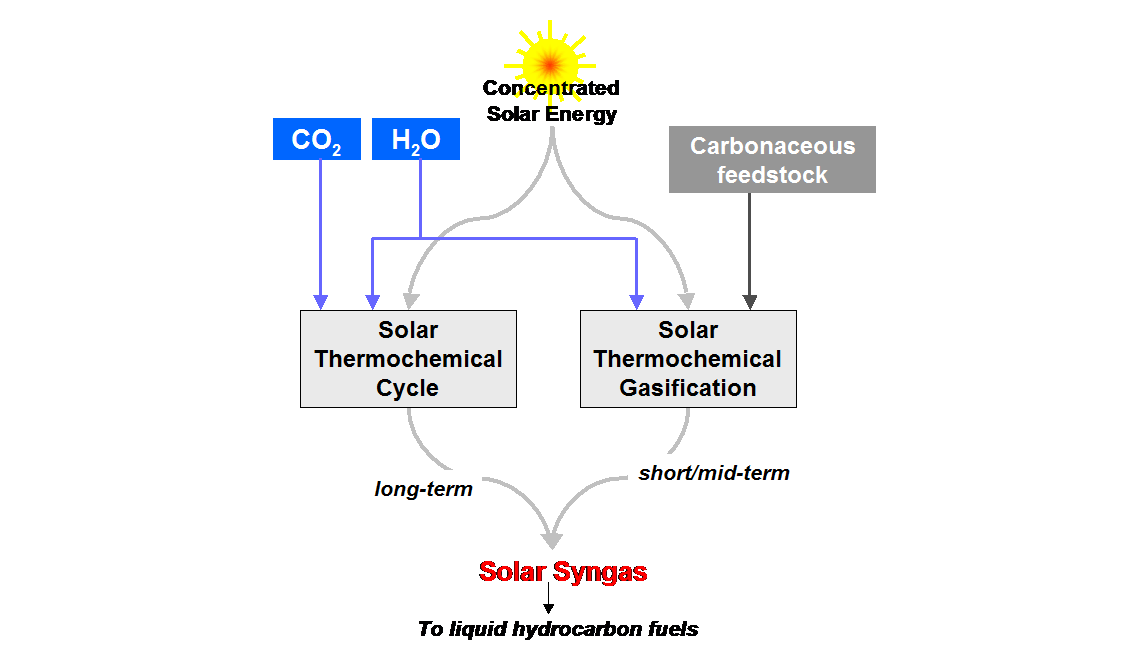Production of Solar Fuels
Storage of the vast, yet intermittent, diffuse and unevenly distributed solar energy resource is essential for the transition away from fossil fuels. Liquid hydrocarbon fuels offer exceptionally high energy densities and are convenient for the transportation sectors without changes in the current global infrastructure. However, their production from H2O and CO2 using solar energy input has remained a grand challenge.
Concentrated solar energy provides a virtually unlimited source of clean, non-polluting, high-temperature heat. Solar thermochemical approaches to splitting CO2 and H2O inherently operate at high temperatures and utilize the entire solar spectrum, and as such provide a thermodynamically favorable path to solar fuels production with high energy conversion efficiencies.
The targeted solar fuel is syngas: a mixture of mainly H2 and CO, which can be further processed to synthetic liquid hydrocarbons (e.g. diesel, kerosene, gasoline, methanol, and other alternative liquid fuels). The ultimate goal is to develop technically and economically viable solar chemical technologies for producing solar syngas for a sustainable energy supply system. The strategy for reaching this goal is illustrated in Fig. 1. It involves research on two paths:
- the long-term path for the production of syngas from H2O and CO2 via solar thermochemical redox cycles.
- the short-to-mid term path for the for the production of syngas from carbonaceous feedstocks (coal, biomass, C-containing waste materials) via solar thermochemical gasification processes.

Pursuing R&D in both the long-term and the short-to-mid term paths is a recommended strategy. The long-term path requires elevated temperatures and the development of a completely novel process engineering technology. It will bring us to the complete substitution of fossil fuels with solar fuels. The short-to-mid term path requires more moderate temperatures and uses a combination of novel and conventional processes. It creates a link between today's fossil-fuel-based technology and tomorrow's solar chemical technology, and reduces the lead-time for transferring important solar technology to industry. This approach conserves fossil fuels, reduces CO2 emissions, and offers a transition path to solar fuels.
Related publications